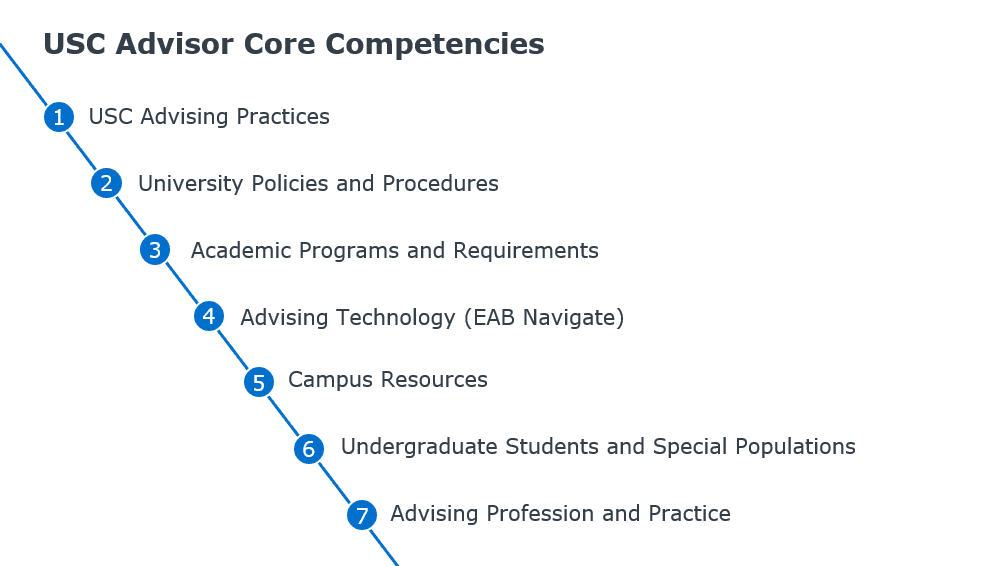How four schools engaged their entire campus for greater student success impact
As part of the Student Success Collaborative research team, I’ve followed our partner case studies closely. Lately, I’ve noticed something new.
In previous years, most student success initiatives started—and ended—in the advising center, or were focused on niche groups of students. Efforts to expand participation in student success faced skepticism from other offices and a lack of broad support.
Now schools are beginning to share stories of true campus-wide engagement in student success. With access to new technology, it’s possible to empower and bring together more individuals and offices to collaborate for student success. See how the four schools below better engaged existing campus stakeholders to see an immediate impact.
Standardize advising processes across the whole campus
Professional academic advisors are often the first line of defense for struggling students. But that doesn’t mean all advisors provide the same quality of advising, or even the same information, from one office to the next. For years, the University of South Carolina (USC) struggled with this problem. Each of USC’s 11 academic colleges had its own advising practices and expectations. As a result, students’ experiences (and satisfaction) varied dramatically.
In response, USC created a taskforce to compare their advising model against EAB’s best practices. They then rolled out campus-wide standards for advisor training, certification, expectations, and processes. Advisors in every department now go through the same rigorous certification process to learn key elements of successful academic advising, including using EAB’s student success management system Navigate, which helps advisors identify and contact students in need of support, and allows schools to eliminate barriers to student progress.

To reduce variation within departments, advisors set automatic alerts for students who might be at risk of dropping out, which ensures they get referred to relevant offices (like financial aid and career services) regardless of which advisor the student is assigned.
Integrate academic advising and career counseling to improve student outcomes
Thanks to these efforts, USC’s four-year graduation rate increased by 3.7 percentage points. Perhaps more impressively, students are reporting better experiences: Since 2014, the percentage of students who said they were “extremely satisfied” with advising increased by 12 percentage points.
Empower faculty to help at-risk students
Empowering a corps of professional advisors is important, but may not be helpful if your school relies heavily on faculty for advising, which often results in competing priorities between assigned caseloads and course instruction. Like many smaller schools where faculty serve as advisors, Samford University struggled to define faculty’s advising responsibilities. Faculty knew which students needed help but lacked a clear way to monitor and communicate student progress. Meanwhile, support staff had the capacity to intervene but didn’t know which students needed help.
The unique student success challenges faced by small schools
To better engage their faculty in student success, Samford worked with EAB to establish new policies that required midterm grade submissions. During training, leadership provided data to faculty showing how these grade submissions directly lead to better student outcomes. Faculty advisors now use the information to identify which students are at risk of failing classes or dropping out. They can message these students in the platform and set up advising appointments to help them get back on track.
As they continue their work to improve student success, Samford’s leadership team remains focused on being a partner to faculty and helping them understand why their role in student success matters. And it has made a big impact—in just one year, retention increased by two percentage points, equating to over $674,000 in additional tuition revenue.
Connect a network of support offices via technology
At schools with a decentralized advising model, many people across campus work directly with students every day, making the coordination of all these touchpoints a headache. The University at Albany struggled to fix issues caused by poor coordination between student-facing offices, like duplication of staff efforts and inconsistent support for students. For example, more than half of Albany’s students are eligible for tuition assistance through a state-wide grant program, but many of them didn’t receive funds because they fell out of compliance without anyone realizing it. Albany needed to create a more collaborative culture that prevented students like these from slipping through the cracks.
Albany partnered with EAB in 2015 and launched Navigate. With student data centralized and easily accessible, different offices have been able to collaborate like never before. For example, when faculty are worried about a student suffering from attendance or performance issues, they can quickly identify the student’s resident director and request a wellness check. Over 60 wellness checks were requested by faculty in the last year.
Navigate has helped Albany’s student-facing offices to better support their students. Two re-enrollment campaigns helped ensure that more than 2,000 students re-enrolled, including over 800 who are back in compliance for the state-wide grant, resulting in a combined total of more than $5 million in additional tuition revenue.
Give students the tools to help themselves
Ultimately, there is only so much college advisors, faculty, and staff can do to promote student success. Success ultimately requires students to steer their own course. However, many students lack the necessary—and often hidden—knowledge required to survive higher education, especially if they are the first in their families to go to college.
Like many private universities, Robert Morris University’s (RMU) feels strongly that they owe their students a personal, supportive, and guided college experience. However, students didn’t have a clear checklist to stay on track and succeed. To fill this gap, RMU gave students access to Navigate Student, a mobile app that guides students through the milestones they need to succeed in college. RMU’s Student Success team ran a variety of marketing campaigns to encourage student adoption, including a “download week” that culminated in a pep rally with big prizes.
The lynchpin in RMU’s successful adoption plan was integrating Navigate Student into the first-year seminar. Students completed activities in the app aligned to the seminar topic of the week—for example, during Financial Literacy Week, seminar instructors showed students the “Paying for College” feature and asked them to look up the financial aid office’s contact information in the app.

The obvious benefit of these assignments is engaging students in key elements of the college experience. But it benefits RMU staff too. Advisors can see the results of the quizzes and polls, giving them insight to follow with targeted outreach to keep students on the right path.
RMU dramatically exceed their 50% adoption goal—94% of first-year students downloaded the app. But ultimately, the app campaign empowered students to find the information they needed keep themselves on track and seek out help when they needed it. This and other related initiatives contributed to RMU’s two percentage point increase in first-year retention.
These practices may seem intimidating or expensive. But what I learned from speaking with these schools is this: when leaders sit down and talk to members of the campus community, discussing how their work impacts student success and what their barriers are, it’s much easier to identify areas for improvement and give their “village” a say in the process.

More Blogs

Four signs it’s time to break up with your student CRM

Three lessons from 1,200 student success leaders on higher ed’s future
